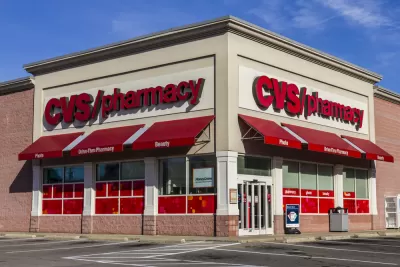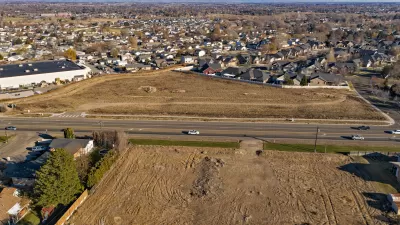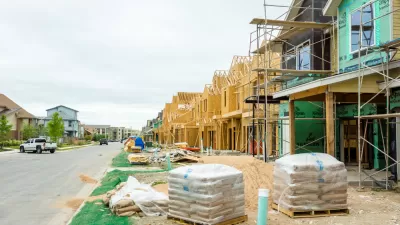A huge public response shows that the booming city is defining a new future with smart growth.

There are nearly 10,000 CVS outlets, but none are in Boise, Idaho. Given the rapid pace of growth in a city where home prices have risen 30 percent in two years, it’s not a surprise that the company has a plan to enter the market.
But that plan, which would destroy 23 units of low-income housing, has run into serious community opposition that is less about CVS and more about the future of Boise.
The conflict began over parking, Joe Eaton reports, which has become something of a theme in the state’s largest city.
“Before breaking ground, the developer applied for a city waiver to put in 48 parking spaces, which is beyond the number allowed based on the size of the building. Neighbors rallied against the proposal, which they argued would have increased traffic, harmed the walkability and charm of the neighborhood, and removed badly needed affordable housing. The developer’s application was met by more than 500 public comments in the first two weeks.”
The enormous public response is indicative of a lively debate about development in a town trying to accommodate rapid growth.
“A city’s values, versus its laws, is at the heart of the CVS battle in Boise, where efforts to encourage denser, more walkable development have been picking up steam. In 2011, the city adopted Blueprint Boise, a 20-year plan to manage growth with the objective of making Boise “the most livable city in the country.” The plan is heavy on smart-growth policies including promoting mixed-use development, open spaces, and a walkable and bike-friendly urban core. But it’s just a policy, not a binding regulation.”
Eaton adds that what’s going on in Boise also reveals something essential about the city.
“But if the CVS dustup demonstrates the downsides of economic growth, it also shows off one of Boise’s key advantages when it comes to fending off unwanted development. The city’s modest size, Windsor said, means that neighborhood associations tend to stick up for each other, even if a proposal wouldn’t affect their area directly. The CVS resistance drew big crowds from multiple groups, and she has little doubt that their drive-thru proposal would have sailed through the Planning and Zoning Commission if so many people hadn’t shown up to oppose it. That, she said, made all the difference.”
FULL STORY: Booming Boise Picks a Fight With CVS

Alabama: Trump Terminates Settlements for Black Communities Harmed By Raw Sewage
Trump deemed the landmark civil rights agreement “illegal DEI and environmental justice policy.”

Planetizen Federal Action Tracker
A weekly monitor of how Trump’s orders and actions are impacting planners and planning in America.

The 120 Year Old Tiny Home Villages That Sheltered San Francisco’s Earthquake Refugees
More than a century ago, San Francisco mobilized to house thousands of residents displaced by the 1906 earthquake. Could their strategy offer a model for the present?

Ken Jennings Launches Transit Web Series
The Jeopardy champ wants you to ride public transit.

BLM To Rescind Public Lands Rule
The change will downgrade conservation, once again putting federal land at risk for mining and other extractive uses.

Indy Neighborhood Group Builds Temporary Multi-Use Path
Community members, aided in part by funding from the city, repurposed a vehicle lane to create a protected bike and pedestrian path for the summer season.
Urban Design for Planners 1: Software Tools
This six-course series explores essential urban design concepts using open source software and equips planners with the tools they need to participate fully in the urban design process.
Planning for Universal Design
Learn the tools for implementing Universal Design in planning regulations.
Clanton & Associates, Inc.
Jessamine County Fiscal Court
Institute for Housing and Urban Development Studies (IHS)
City of Grandview
Harvard GSD Executive Education
Toledo-Lucas County Plan Commissions
Salt Lake City
NYU Wagner Graduate School of Public Service





























